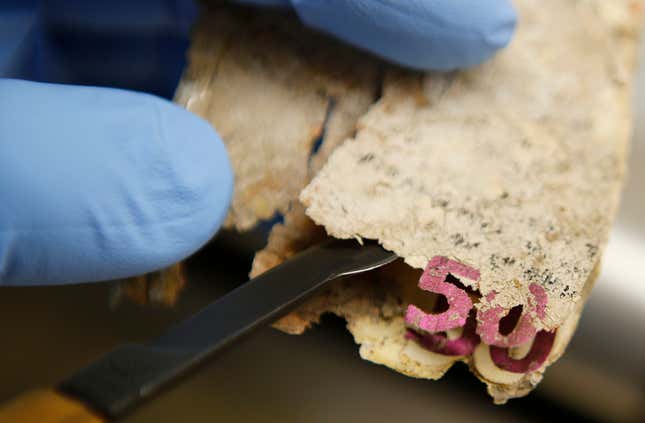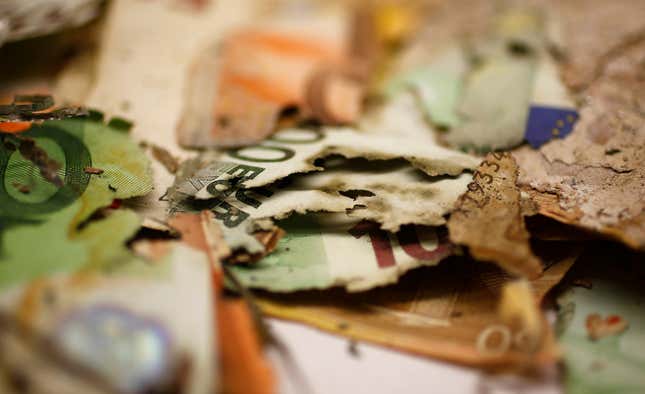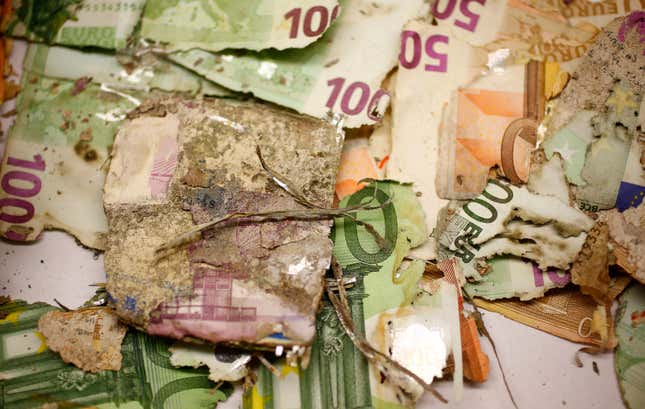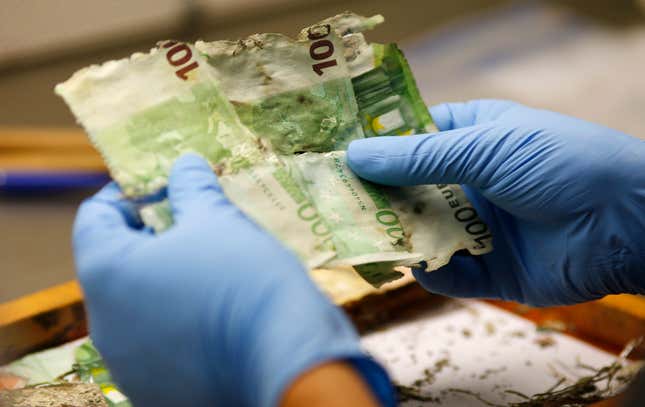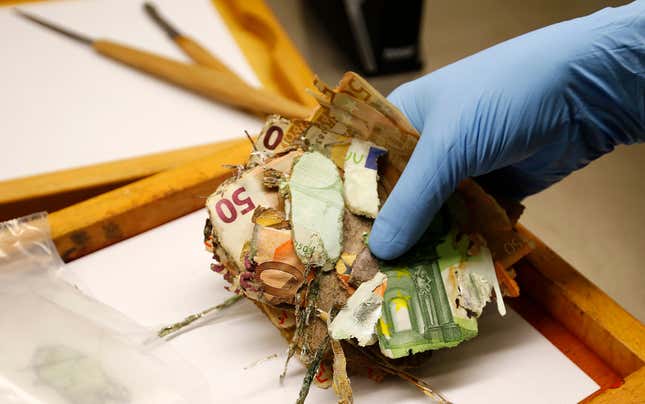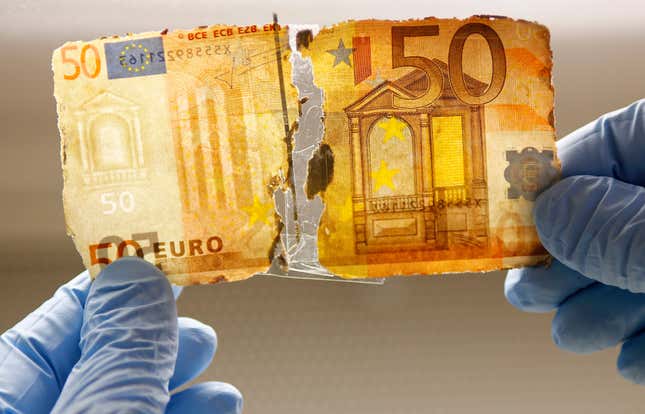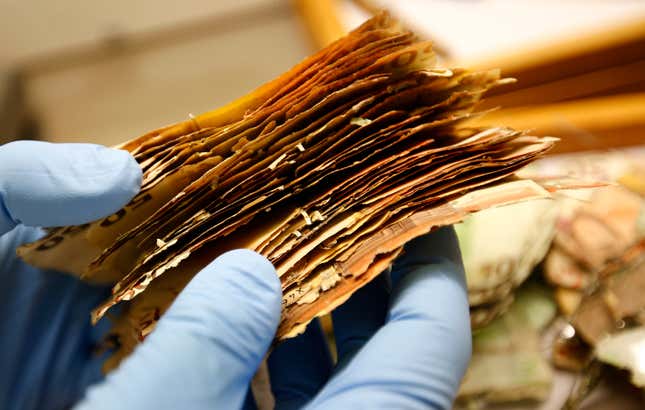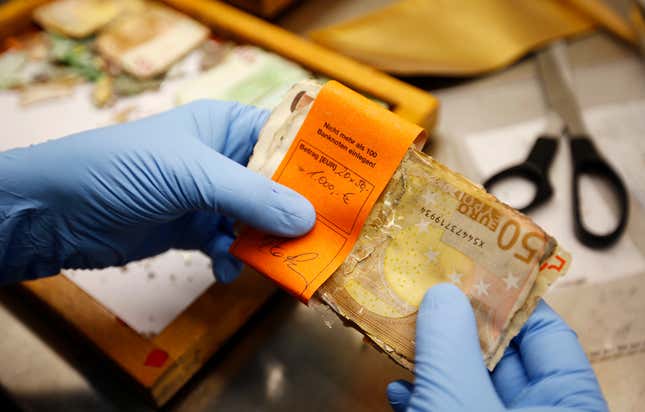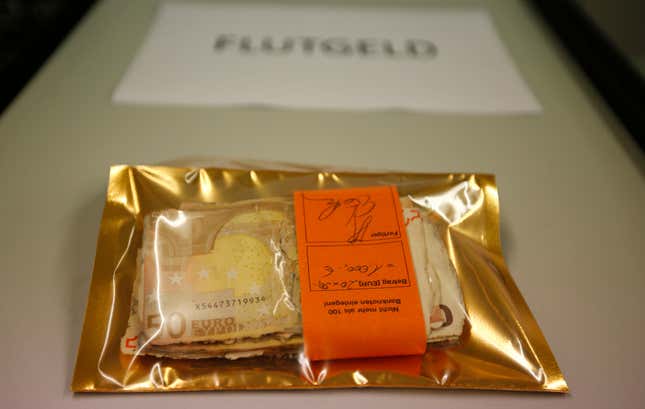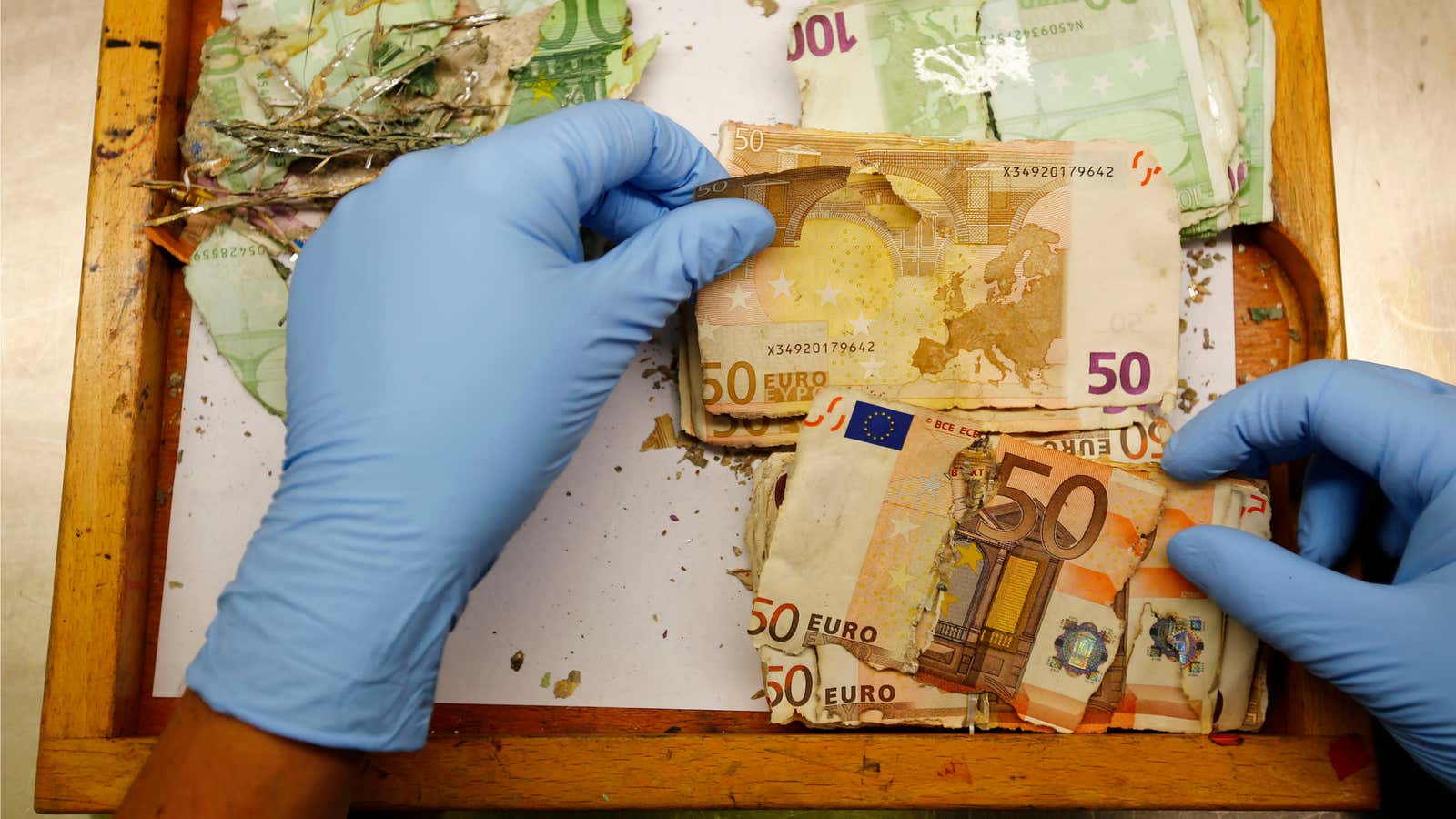Earlier this summer, heavy floods displaced tens of thousands of people in central Europe. The flooding was particularly severe in parts of eastern and southern Germany, where thousands of homes were destroyed. Out on the streets, many towns and cities are still working to recover from the damage. But behind the the scenes, there’s a different kind of repairing going on: a team of forensic scientists is reconstructing more than 100,000 euro banknotes worth more than $4 million that were damaged in the floods.
Germany’s central bank, the Deutsche Bundesbank, employs a team of 13 scientists whose job it is to revive damaged or destroyed banknotes. When heavy floods hit, their task is all the more daunting. The 100,000 banknotes currently being reconstructed were sent within eight weeks of the floods, many recovered from private basements, bank safes and cash machines. In total, more than 840,000 banknotes worth over $42 million have been checked by the team this year.
The process is time-consuming, and involves tedious tasks like separating out each banknote in hopes of accounting for as many as possible. But it’s also an important one. Once the banknotes are reconstructed and verified, the reserve repays the owner in full. As for the damaged banknotes? They’re burned.
The process is fascinating. Here’s a closer look.
